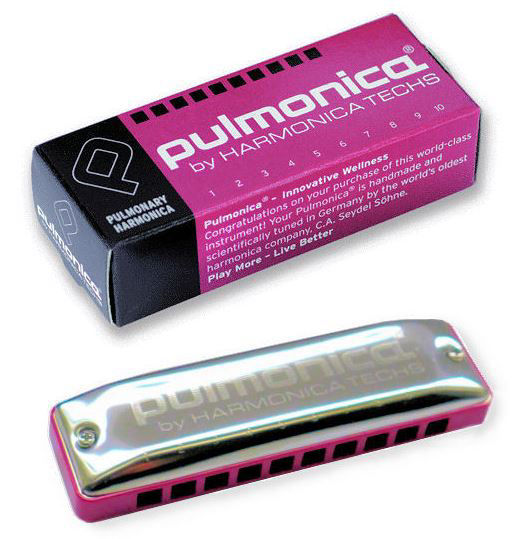"I am asthmatic, can I still play harmonica?" I have been asked this question at least twice, since then, I wanted to dig into it to find out what harm it can really do if you play harmonica when you have some breathing problems. And as I expected, not only did I discover that there were no contraindications for asthma patients, but I went through many other interesting articles that rather referred to our instrument as an adjunct for the treatment of these malfunctions.
Let me tell you something, it is often observed that even those who don't have any problem with their lungs, need to work on their breathing during harmonica practice, which is quite normal proving that it is a crucial part of learning process for this instrument actually. Learn to balance your breath so that you don't fill up like a balloon or run out of air altogether, and it certainly requires the execution of some specific exercises.
The breathing pattern, we learn during study of the blues harp, is long and relaxed. It surely helps not only those who have asthma but also those who have extreme anxiety problems. After all, we all might experience it at some time; when we are agitated and anxious we suffer shortness of breath and sweat profoundly, but what do we do in order to get relaxed? Nice, long and deep breaths, as there lies remarkable benefit hidden in them.
When a new student comes to me, I can immediately tell whether he is calm or disturbed and I deduce it by noticing the way he breathes. Mostly, peaceful people are capable of producing quiet and long notes, whereas the agitated ones keep breaking the sound all the time; they can't handle volume of the notes and oscillate from one hole of the instrument to another. Solution: we work on the conditions and fix these things gradually.
Let's go back to the harmonica and breathing exercises. Today there is a model, significantly designed as a therapeutic tool for the treatment of respiratory abnormalities, produced by the German house Seydel and is called 'Pulmonica'. This instrument costs about 100 dollars and has a very low intonation, creating sounds and vibrations that are received both in lungs and in the paranasal sinuses. These vibrations free our airway from secretions and unhealthy fluids and help us breathe better.
The Pulmonica is not designed to be played as a normal harmonica, but it still can produce chords and perform melodies, being delivered in low G key with country tuning. The main purpose of this therapeutic tool is, however, to practice breathing, hence its holes offer a variable resistance to the flow of air from our lungs. In addition to this, the holes on the right side of the instrument - corresponding to the higher tones - require less effort while the first 4 holes offer greater resistance.

How is this harmonica used to improve breathing?
It is very simple: put yourself in a comfortable, seated position, and start breathing deeply through the instrument, alternating long inhalations and exhalations. The advice is to begin this procedure in sitting position because when you take deep breaths, it may cause you hyperventilation; a situation - you may have already experienced - referred to as a feeling of slight dizziness. If this happens to you, just discontinue it for a while and resume it while consuming less air or breath through the holes on the right side of the instrument. When you become an expert, you can continue this training without any problems even if standing upright.
Deep breathing requires contraction and relaxation of the diaphragm when we put air into the lungs and return to its place during the exhalation. It may be useful to place the palm of a hand on the stomach to verify the correct movement. During the exercise if you feel dryness in your throat, drink some water and try to inhale through the nose instead of your mouth, use the instrument only to blow in.
To further improve your lungs' capacity, you can use the harmonica to play rhythmic chords (chugging) as well as long notes. You don't need to be a skilled player for it; the tuning of this instrument makes it sound pleasant always.
How do I measure improvements when using Pulmonica? You can test the progress of your breathing ability by keeping track of the length of your breaths: the more trained you are the longer and deeper will be your breath.
If you spot any problems with breathing you may consider trying this particular harmonica, however, you must know that even a normal diatonic harmonica - if you study and practice it properly - can be of great help to you for a better breath management. From the beginning, the benefits this practice ensures are comparable to those acquired by singing, sports practice, and even meditation or relaxation disciplines.
This scientific article about the use of blues harp for therapeutic purposes concludes: take a long breath now and…see you soon!